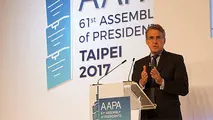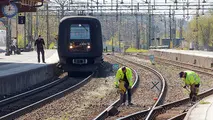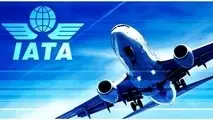EIM presents a new vision for European infrastructure managers

Caroline Huusko, technical manager of the association of European Infrastructure Managers (EIM), explained the organisation’s vision for the future of infrastructure management at the recent Nordic Rail exhibition. Kevin Smith was in the audience.
To support its members through this process, and to promote the best possible outcome of the digitalisation of the European market, in which Huusko says IMs are, and will, play a key role, EIM has come up with a new strategic vision.
EIM says the future EU rail transport system must deliver value to end users, be better connected, care for an increasing number of passengers and goods, implement the highest standards of safety, provide better services and information, and increase energy efficiency. The IM plays a key role in achieving these objectives by providing conditions for the best return on investment, acting as a system coordinator, optimising processes, offering seamless transport and a strong safety culture, and embracing innovation and digital technologies.
“To achieve these objectives, IMs must be multimodal, intermodal and innovative,” Huusko says. “European IMs will also seek new innovations from non-European actors in line with EU objectives.”
Huusko pointed out that the digitalisation of the railway system is crucial for delivering the vision and is evolving in several phases, beginning with classical ICT applications in the first phase, where IMs were reactive, continuing into a second phase where advanced ICT applications are deployed and IMs are increasingly able to monitor conditions.
The third phase encompasses the adoption of customised ICT, covering both back and front office applications, enabling IMs to anticipate certain situations and also to make its data available to the end user. The fourth phase evolves to an interconnected ICT system, delivering an “intelligent” IM which is able to manage infrastructure in a more effective way. It relies on predictive analysis with data processing and management leading to better and more informed decision making. The fifth and final stage delivers a smart ICT system in which the IM has access to an interconnected transport system, and is, in effect, a “super smart” IM, using artificial intelligence and a smart diagnostics system based on the Internet of Things.
“I would say that we are in the middle of stages three and four,” Huusko says. “The railways have in some form been digitalised for a number of years and it is nothing new really. What we need to do now is to interconnect our systems and provide a dialogue between relevant actors.”
As for reaching stage five, Huusko says the biggest challenge for the EU railway system is agreeing a common communications platform. “The language should be something that we can all understand,” she says.
Specialists
As well as the advance of technology, the future environment will be impacted by the rise of third-party maintenance specialists able to take on complicated maintenance tasks, and alternative financing from private sources and non-EU funds.
“The future IM will play a big role in transport standardisation, and moving towards a sustainable society with a strong focus on the customer and competition,” Huusko says. “A big challenge is for governance, specifically the EU, to devise standards that give IMs the best chance of success.”
In addition, she says that there are several factors that can deliver universal success:
- seamless access to all transport services with end customer focus
- improving door-to-door planning and reliability
- offering a fail-safe passenger information service
- efficient collection of safety-related data
- smart asset management for better and easier-to-perform maintenance
- availability of ubiquitous data between railways, and
- an understanding of what is nice to have, and what we need to have.
Critically, Huusko says EIM supports the European Union Agency for Railways’ and European Commission’s vision for a single railway area and, as a result, is working together on the issue. Only this collaborative approach, she says, will provide the strategy, and the railway, with the strongest foundation for the future.
EIM
EIM has 12 full-time members and three associate members operating in 11 European countries. Together they cover 53% of Europe’s rail network, and account for 40% of the continent’s rail freight traffic, and 58% of European passenger traffic.



